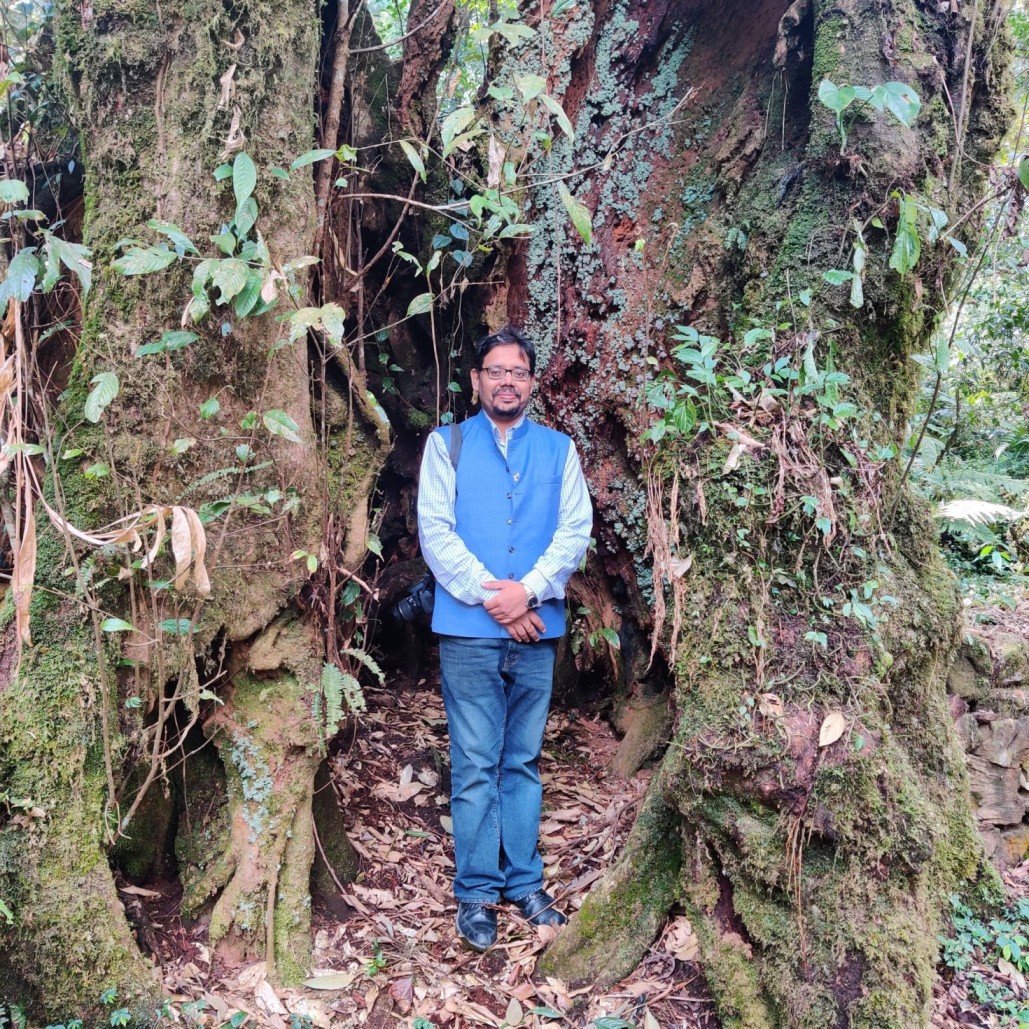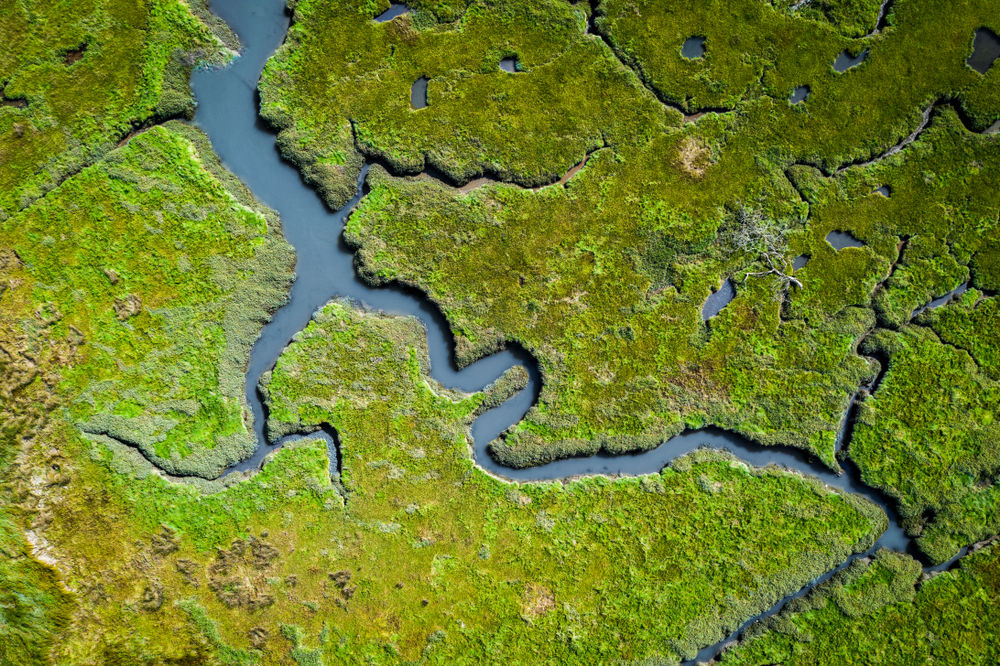India Has Millions of Hectares of These ‘Biological Supermarkets’; You Can Protect Them
If forests are the lungs of the plant, wetlands are the kidneys, and here’s all you can do to protect them.

This article is part of a deep dive to celebrate Environment Day by highlighting individual and community action that leads to large scale impact on the planet. ItStartsWithMe is the second chapter of ‘Shaping Sustainability’, an exclusive series by The Better India, to give our readers an in-depth understanding of how Indians are making sustainability a priority in all walks of life. Find more stories from the series here
India has a diverse wetland regime, ranging from the high-altitude lakes of the Himalayas, the floodplains and marshes of the rivers Ganga and Brahmaputra, the salinas of the arid region, the numerous tanks and reservoirs of the Deccan, the mangroves, intertidal flats, lagoons and estuaries of the east and the west coast and coral reefs straddling the coastline. As per assessments by Space Application Center, our country has 15.98 million ha of wetlands, roughly equaling 4.8% of its geographical area. A majority of wetlands (nearly three fourths) are lesser than 2.25 ha in area.
Wetlands provide a range of benefits to society – if forests are its lungs, wetlands are the kidneys. Wetlands help stabilize water supplies, cleanse polluted waters, protect shorelines, and recharge groundwater aquifers. The extensive food chain and biological diversity in wetlands make them ‘biological supermarkets’. Wetlands are valuable as sources, sinks and transformers of many biological, chemical and genetic materials. In addition, wetlands have special attributes as cultural heritage of humanity and have deep connections with our beliefs and practices.
Yet, wetlands are also one of the most rapidly degrading ecosystems globally and in India. As per our assessments, nearly one-third of natural wetlands in the country have been lost in the last three decades alone.
Citizen participation in wetlands conservation

Active citizen partnership is at the heart of wetlands conservation and wise use. India has a long-standing tradition of citizens being at the forefront of nature conservation, including wetlands.
The distinct recognition of wetlands as audaka in Kautilya’s Arthashastra and anupa in Caraka-Samhita were gradually lost when a revenue centric land administration system was put in place by the Mughals and firmed up in colonial times. A limited understanding of the benefits of wetlands led to their classification within wastelands – and their drainage and reclamation were incentivized within policies for wasteland reduction. Post-independence, when India went into a spate of famines and expansion of area under agriculture was the primary policy for achieving food-security, wetlands were reclaimed under government patronage from Kashmir to Kerala.
Wetlands conservation policy and programming as we see today in India drew its roots from recognition of their roles as waterbird habitats, drawing in parts from waterbird centric wetlands conservation movements in Europe and North America. Erstwhile rulers, several of who were also avid game hunters, laid the foundation of a network of wetland protected areas. Decades of work on Indian birds laid the foundation of a network of wetland protected areas supporting a large congregation of waterbirds. However, the ‘fortress conservation’ approach remains plagued with several problems, and efficacy remains somewhat mixed. The ideas of pristine nature are themselves socially constructed, the impacts on social inequities have been equally high, and the fact the ‘conservation gains’ may have come at a ‘social cost’. Beyond Protected Areas, for most wetlands, there is no single department or agency responsible for conservation and wise use. Often, there are different departments managing wetland waters (such as irrigation and flood control), resources (fisheries and agriculture) and land (revenue), but no one owns the wetland. This leads to sectoral pursuits and ultimate neglect of these ecosystems.
The diversity of wetland governance arrangements has narrowed down over time to be anchored in government departments and agencies. Community participation in management has been reduced mainly to user groups, who have little say in governance matters.
Much of the degradation of the wetlands that we see today are indicators of individual and societal apathy towards these ecosystems. When wetlands are used as waste dumping areas, converted for housing, and water inflows diverted, the image of these ecosystems being wastelands is portrayed. No amount of surveillance, protection, and enacting laws can bend the curve of wetlands degradation and loss unless concerted action for individual and societal behaviour change towards wetlands conservation and wise use is taken at various levels. And these changes cannot be done merely by organizing awareness generation activities, nature-education programmes or campaigns alone – the interventions have to be deeper and systemic.
Ways in which citizens can contribute to wetlands conservation

The predominant view of nature in recent times is that of a resource – which provides for livelihoods and income generation opportunities or indirectly secures productive assets through buffering capabilities – such as wetlands buffering communities from the impacts of floods and droughts. However, this view precludes the role of nature in shaping cultural relations and identities – way beyond being a resource. In this worldview, ‘nature is us’ – not only because it provides benefits, but because of our intrinsic relationships with our being and identity. A resource view of nature limits citizens to users and beneficiaries; the latter relational view places citizens in a much broader role of being stewards and champions. The latter view should serve as the basis of citizen participation.
That brings us to the question – How can citizens contribute to wetlands conservation? I see this playing out at least at three levels. At the individual level, the foundational role is played by awareness – of where wetlands are, their values and benefits, the reasons for their degradation, organizations entrusted with management responsibilities, and rules and regulation on wetlands conservation. An aware citizen can contribute to wetlands conservation through their conscious consumption choices. These can include reducing individual water footprint ( as wetlands are the primary sources of freshwater), reducing waste ( as much of the treated and untreated sewage and solid waste ends up in wetlands), not buying assets (such as houses) on converted wetlands, and not promoting products out of unsustainable use of wetlands (such as shrimps from aquaculture farms which have been created from clearing mangroves).
In the professional space, citizens can deepen engagement with wetlands by gainfully utilizing their skills and capacities for wetlands conservation. This includes participating in wetlands management planning, and monitoring, including citizen science programmes.
In the third space, wherein the citizen acts as a part of broader society, wetlands conservation can be supported by playing the role of a watchdog to ensure that activities that degrade wetlands are flagged and brought to the notice of authorities. This role can be fulfilled by keeping a regular watch on wetlands and maintaining a record of changes, such as new species, invasive species, changes in water availability and quality and others. This also includes keeping an eye for activities leading to wetlands degradation, such as dumping solid waste and sewage, construction within wetlands, blocking water channels, and others. This information should be immediately brought to the notice of authorities.
Notably, several public interest litigations filed by concerned citizens have resulted in the National Green Tribunal and the Supreme Court passing orders for conservation action on wetlands.
In 2021, Wetlands International South Asia partnered with Mongabay-India to showcase examples of affirmative citizen action for wetlands conservation. We were delighted to publish 25 such stories in the series ‘Wetlands Champions’. The activities of these champions have included restoration of tanks and ponds, organizing citizen action groups for conservation, educating the community on values and benefits, preventing pollution, and taking recourse of judicial action for protecting wetlands.
Wetlands conservation is essentially an “all of society” endeavour, not just the responsibility of government departments and agencies. Actions by everyone in the society count – and affirmative actions by concerned and well-informed citizens are the most potent of these.
(Written by Dr Ritesh Kumar, Edited by Vinayak Hegde)
The views expressed in this article are author’s own.
If you found our stories insightful, informative, or even just enjoyable, we invite you to consider making a voluntary payment to support the work we do at The Better India. Your contribution helps us continue producing quality content that educates, inspires, and drives positive change.
Choose one of the payment options below for your contribution-
By paying for the stories you value, you directly contribute to sustaining our efforts focused on making a difference in the world. Together, let's ensure that impactful stories continue to be told and shared, enriching lives and communities alike.
Thank you for your support. Here are some frequently asked questions you might find helpful to know why you are contributing?


This story made me
-
97
-
121
-
89
-
167














